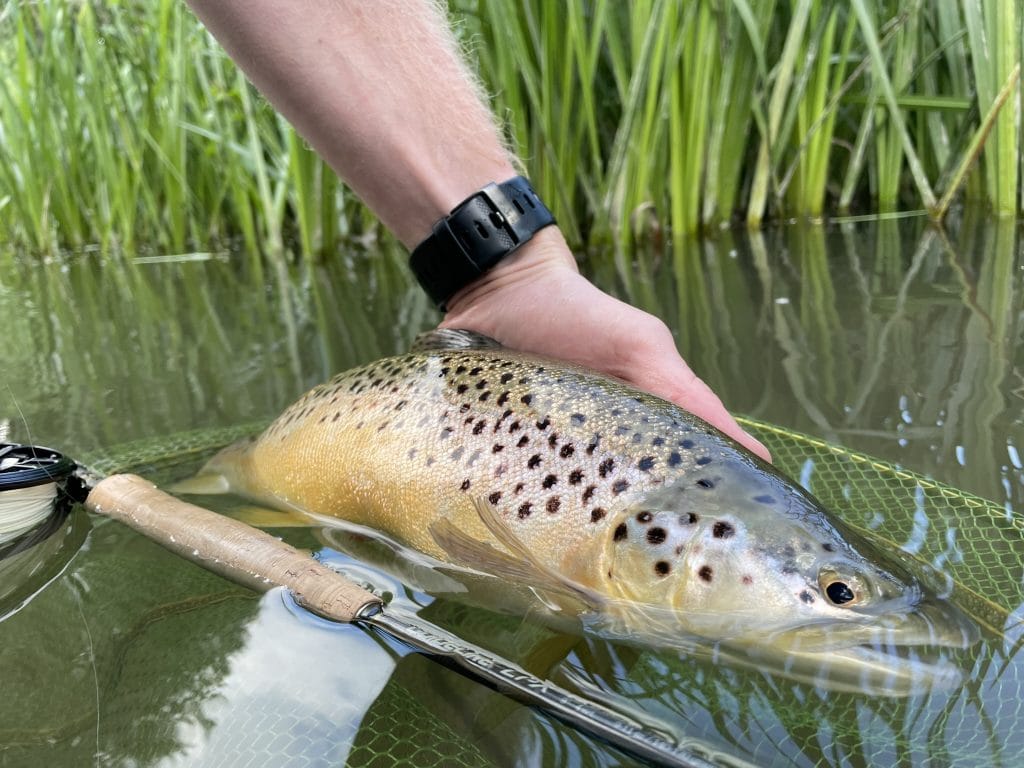Summertime on the chalkstreams offers some of the most technical dry fly fishing of the season. More often than not the best fishing is at dawn and dusk when it is cooler. The hatches may not last for long so it is important to have the correct patterns in your box when the fish start rising. At this time of the season the emphasis is on smaller flies so accurate casting, light tippet and drag free drift are essential. There are some of our must have dry flies listed below.
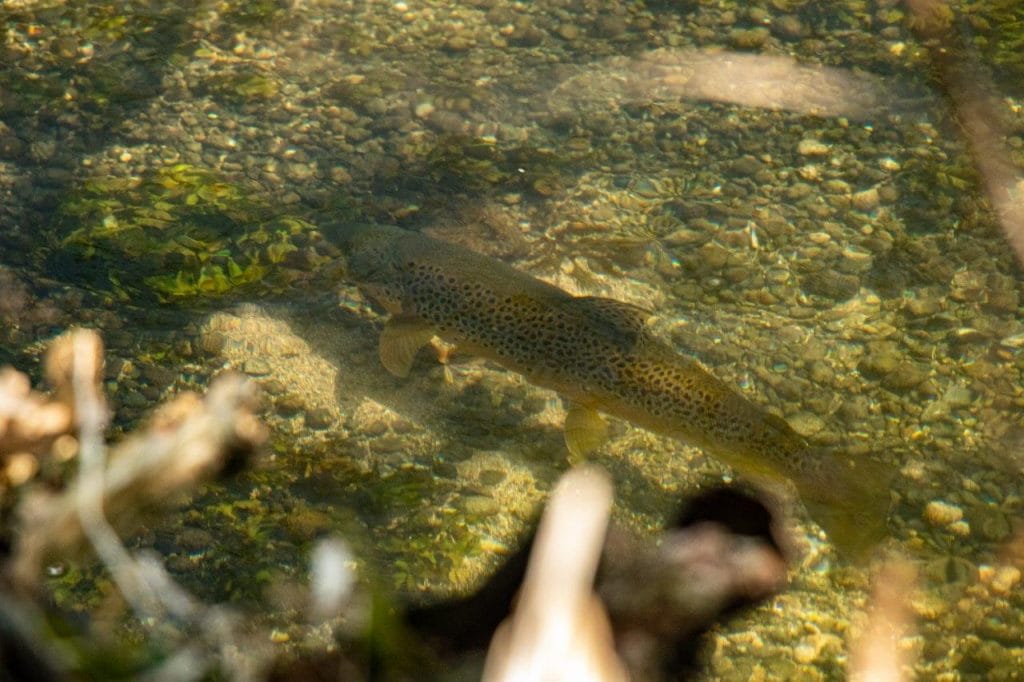
1. Duck’s Dun
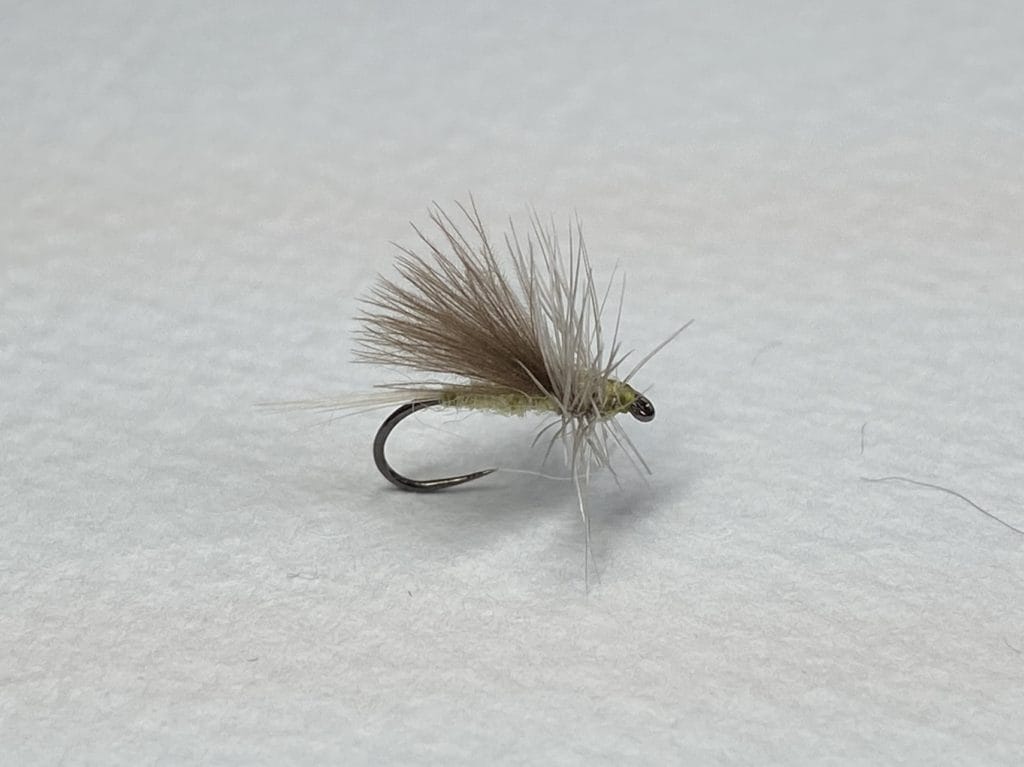
Throughout the whole season you will stumble across a plethora of olives that hatch on the chalkstreams, these vary in size from 14-20. To imitate these hatches a carry a variety of sizes of the Duck’s Dun. This pattern has a great silhouette and footprint that rarely fails to tempt a regularly feeding trout.
Recommended Size: #14-20
2. Iron Blue Dun
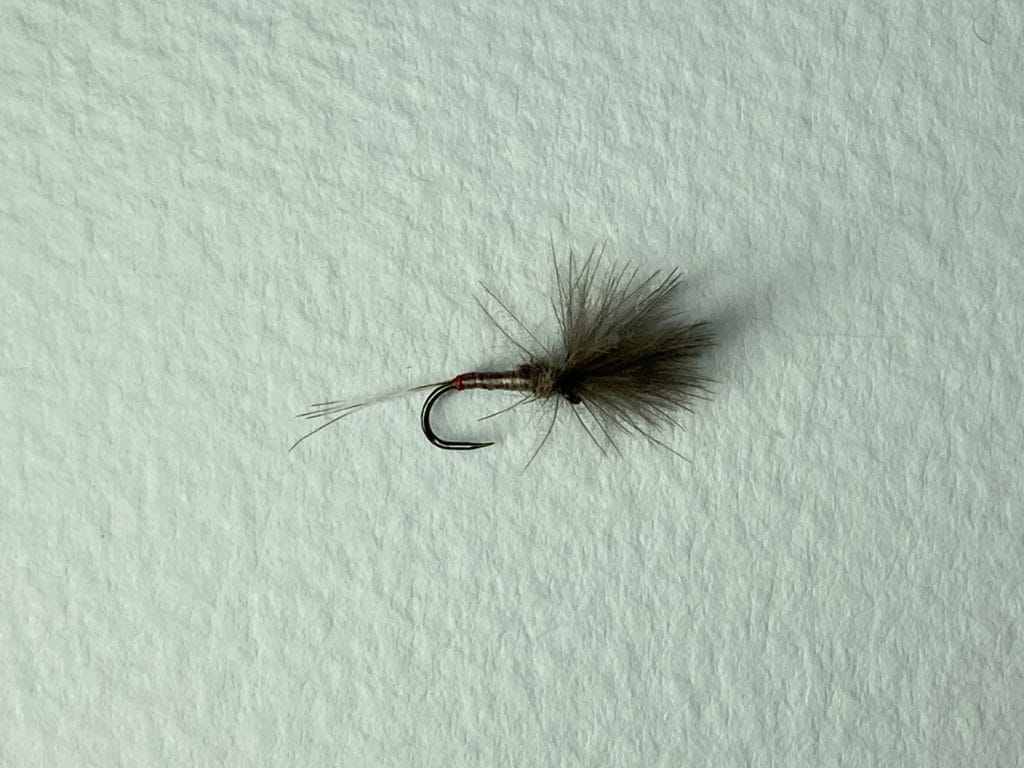
Towards the end of the mayfly hatch each season you will often find trout rising consistently, but they will refuse every mayfly imitation you can summon. On closer inspection, you may find that they are in fact targeting one of our smallest olives, the Iron Blue Dun. A small fly but a significant hatch, you should always have this pattern at the ready.
Recommended Size: #18-22
3. Twinkle Gulper
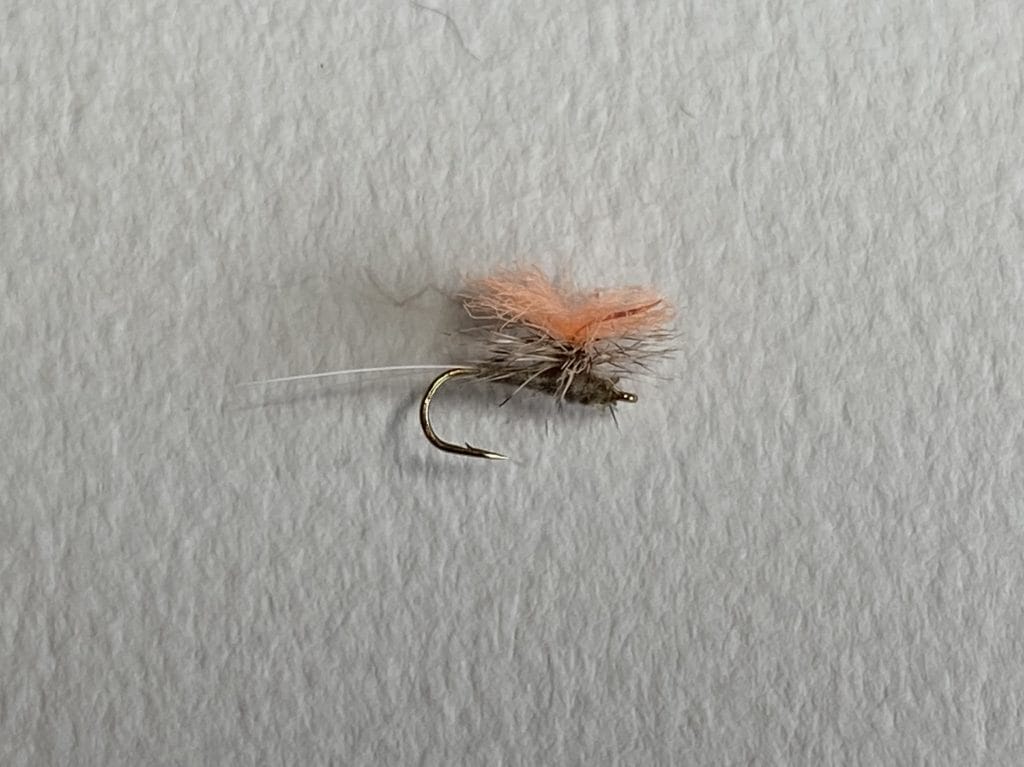
After the June weed cut once the mayfly hatch has finished, it is easy to look at the river and think not much is happening. Don’t be fooled, the trout are still hungry and there are still hatches to be targeted. At this time you will often find an increase in midge activity and smaller olives, for this I find the Twinkle Gulper to be a great all round imitator. It is even a good fly for late night spinner falls.
Recommended Size: #16-20
4. Crippled Spinner
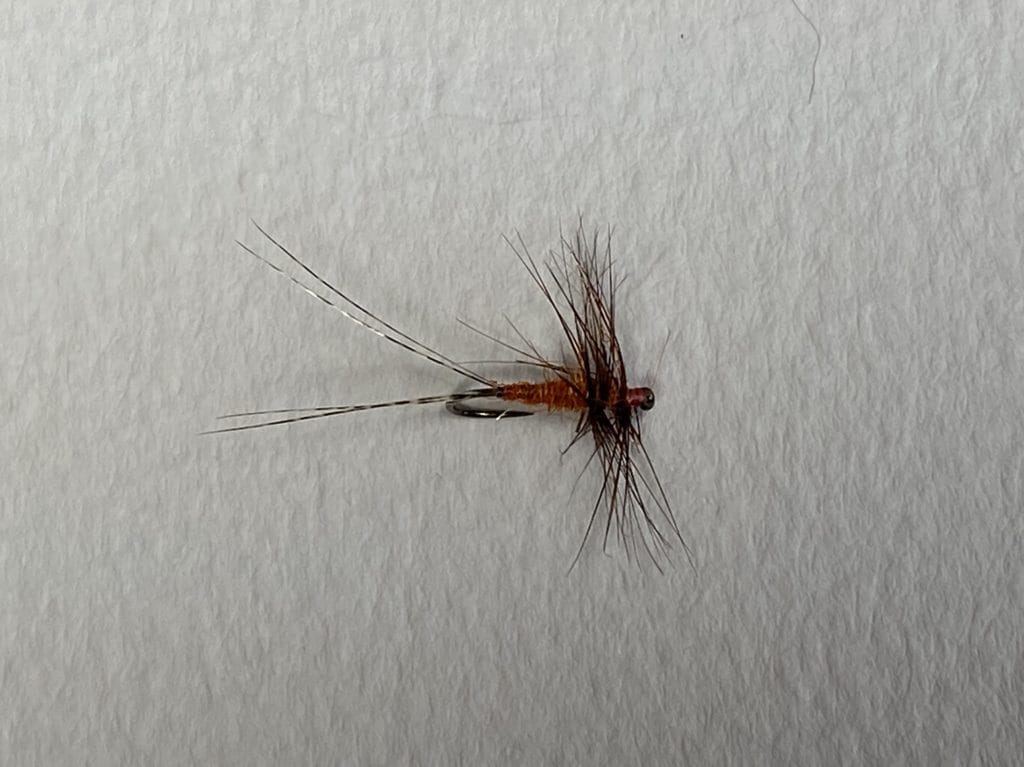
Balmy midsummer evenings, there really is nowhere better to be than on the river… the trout think so too. Chalkstream fly fishing in the middle of summer can seem slow, but if you think that you are on the water at the wrong time. Wait until the evening and the place comes alive as small olives return in the low light to lay their eggs. This pattern has served me incredibly well since I added to my dry fly collection.
Recommended Size: #16-20
5. Dave’s Grey
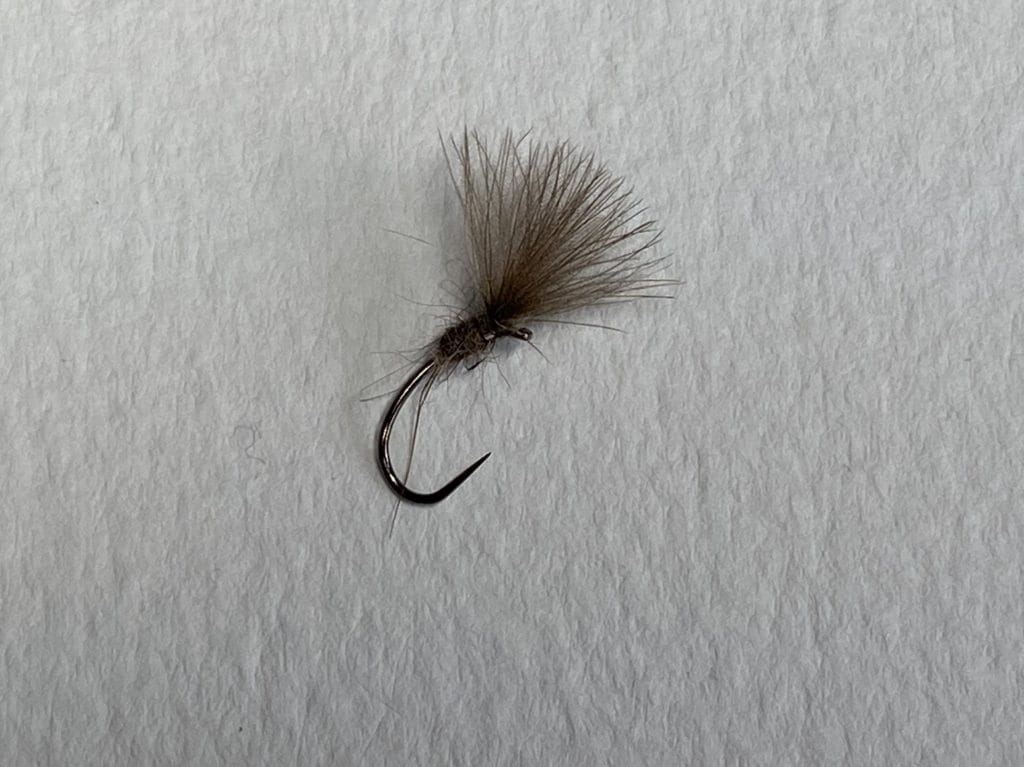
Sticking with those slow midsummer days, we have all found ourselves in that situation when the trout are hugging the banks and just dimpling slightly at tiny reed smuts and general small stuff (technical fishing term). It can be infuriating as all the regular go to flies produce no response. It is these moments when this pattern so often saves the day, it hardly looks appetising but the trout so often think otherwise.
Recommended Size: #18-24
6. BWO Emerger
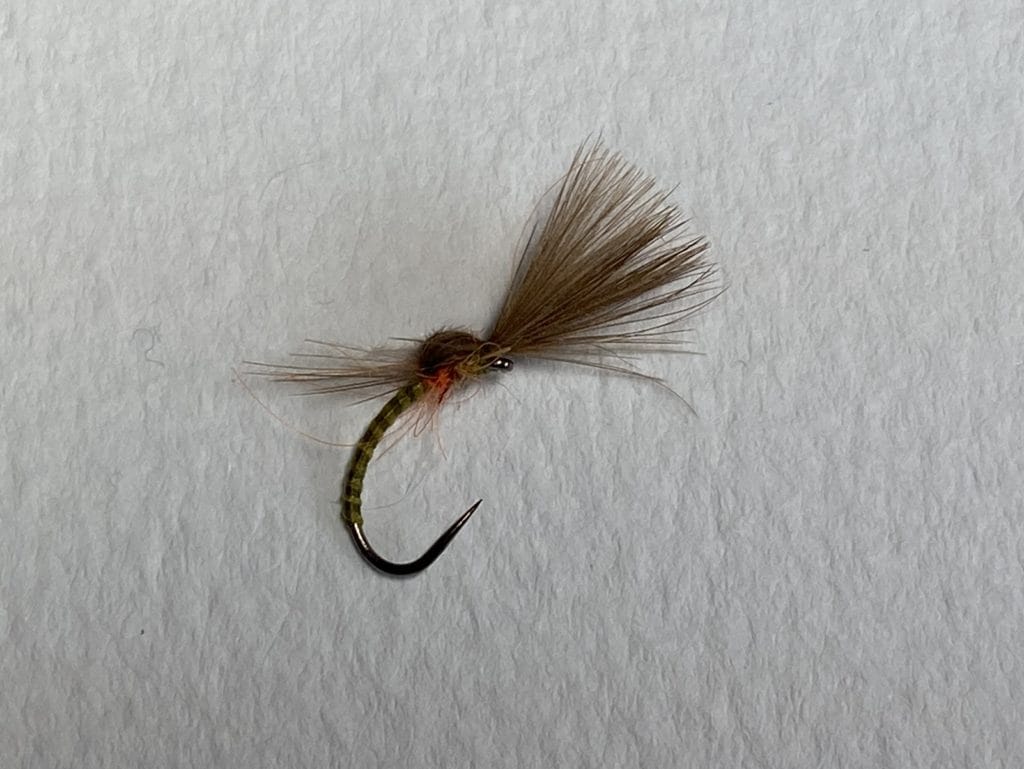
As August slips into September, my excitement grows – this is one of my all-time favourite periods to be fly fishing on the chalkstreams. The warm slow days are behind us and the cooler damper weather has spurred on fresh hatches of olives, including a trout-favourite, the Blue Winged Olive (BWO). This olive emerger with slight touch of orange in the thorax has proved deadly for when the trout are fixated on little BWOs.
Recommended Size: #18-24
7. All Season Sedge
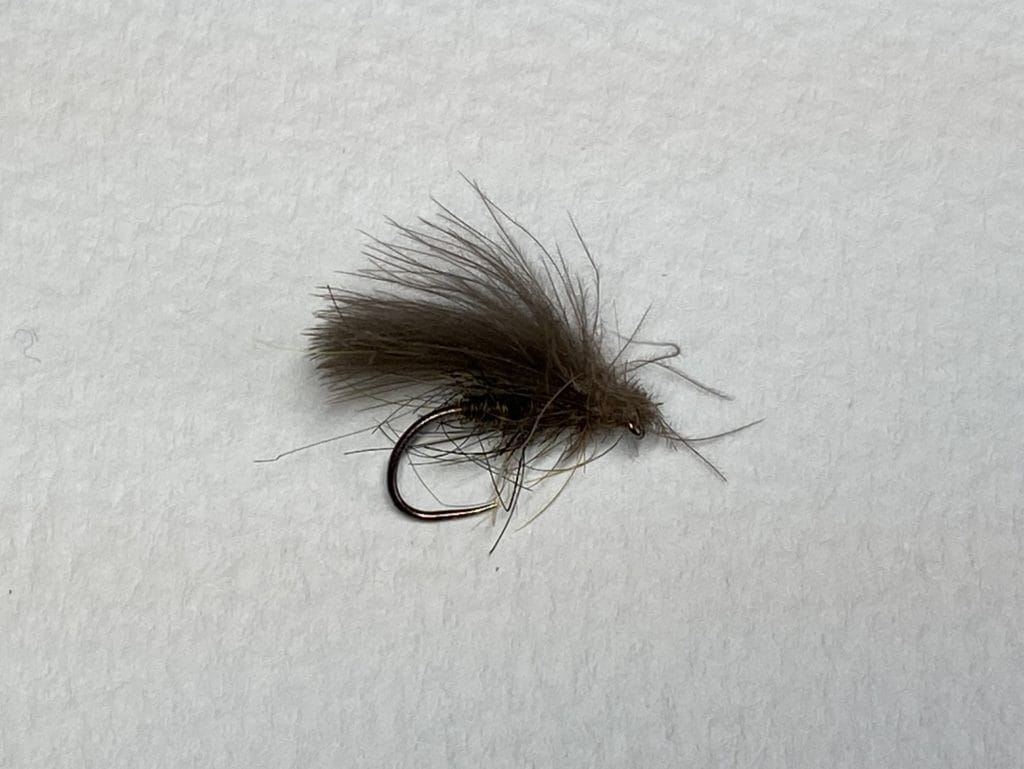
The latter half of the chalkstream fly fishing season is also largely dominated by hatches of various caddis fly (a.k.a Sedges). They will often be found fly in clusters in the afternoon shadows of trees just inches above the river surface. Often driving the fish crazy, the fish will become ultra-aggressive and they will take any vaguely similar offering that lands with a bit of a splash nearby. The All Season Sedge is a good all round imitator and should always be readily available in the late afternoons.
Recommended Size: #12-16
